By Dan Weisz
I’ve been following a Red-Tailed Hawk nest for a few weeks. It is located in mid-town Tucson, high up in a eucalyptus tree in a residential area one short block from busy Grant Road. The chicks had been getting larger and more feathered and had fledged, beginning to climb out of the nest and onto branches of the tree. One morning I drove over with a friend to find one of the chicks on the ground. Whether it fell out of the nest or purposely tried to jump/fly I don’t know. I do know that in some other raptor species, especially the common Cooper’s Hawk, the young do spend some time on the ground before finally becoming skilled in flying.
This chick appeared healthy, well fed, and not stressed. Its parents flew by periodically and were monitoring things.
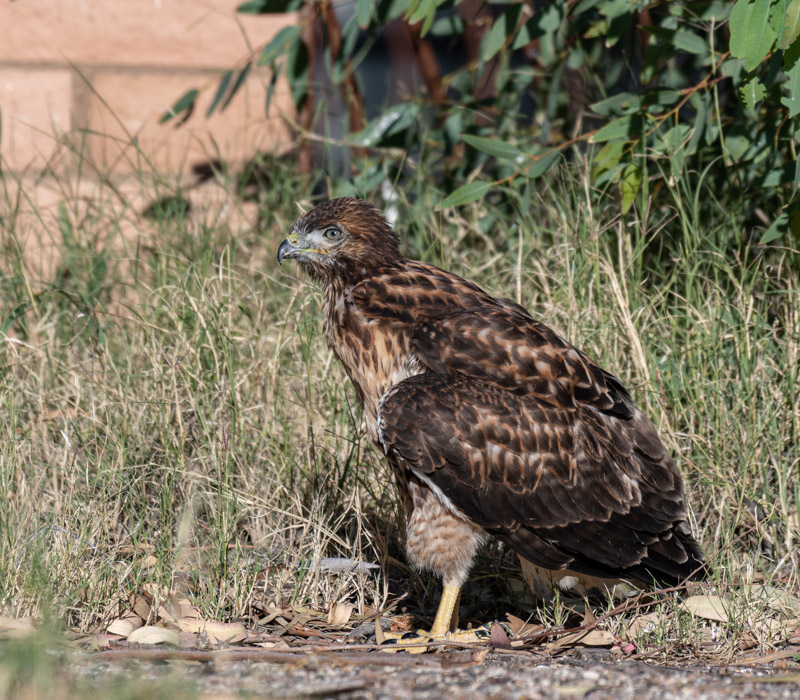
At one point the Red-Tailed Hawk chick looked back up to its nest seeming in awe of how far it had traveled.
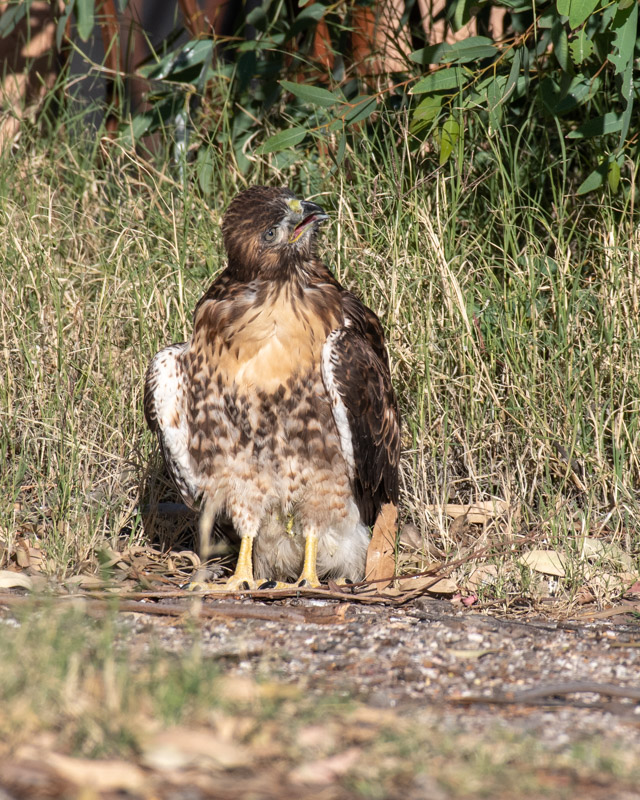
In the tree above the nest, one of the siblings perched. This bird appeared to be very ready to fly but it mostly sat and waited while we were there.
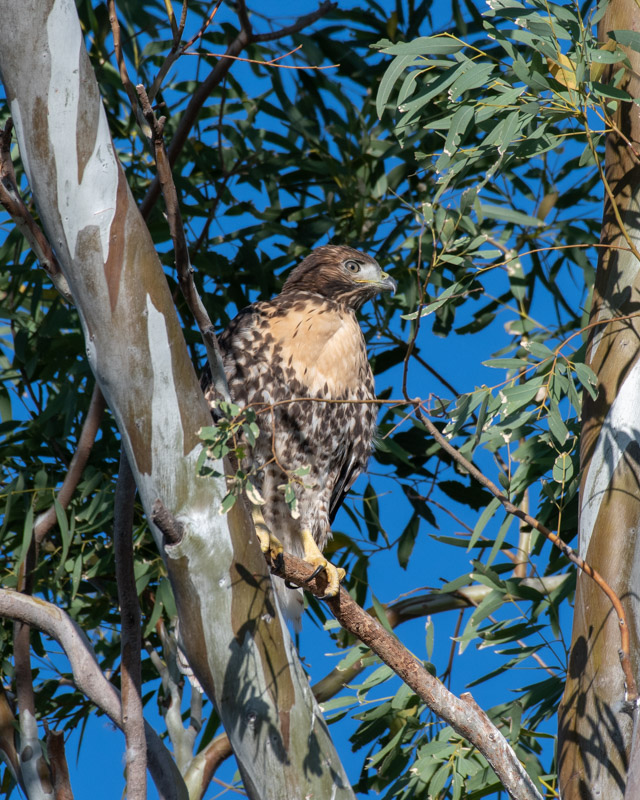
The third chick remained in the nest but walked all around the top of the nest and also appeared very ready to head out very soon.
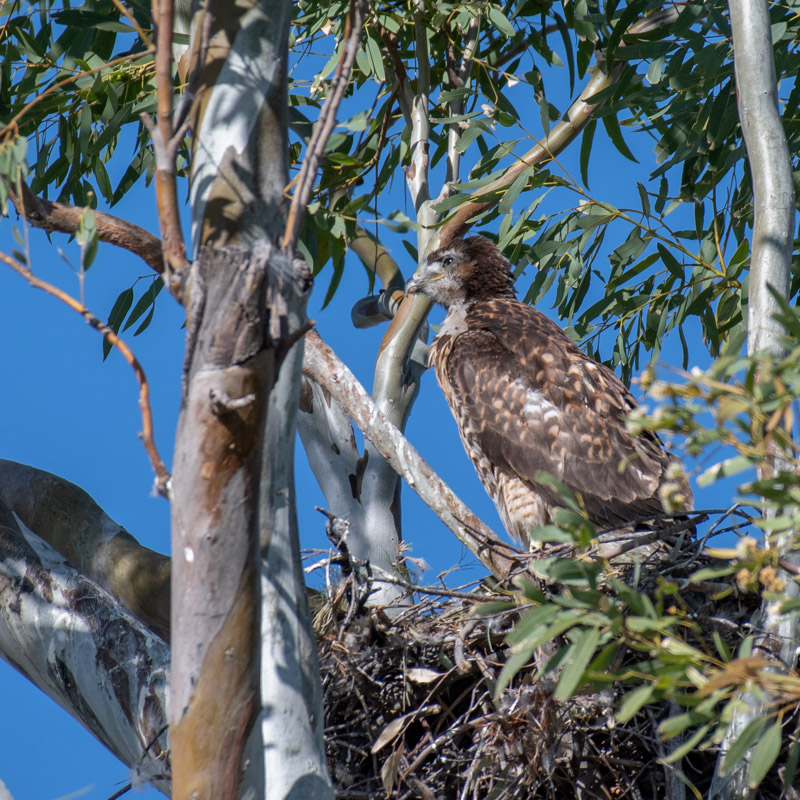
Meanwhile Junior, on the ground, began scratching its beak, or perhaps cleaning its talons.
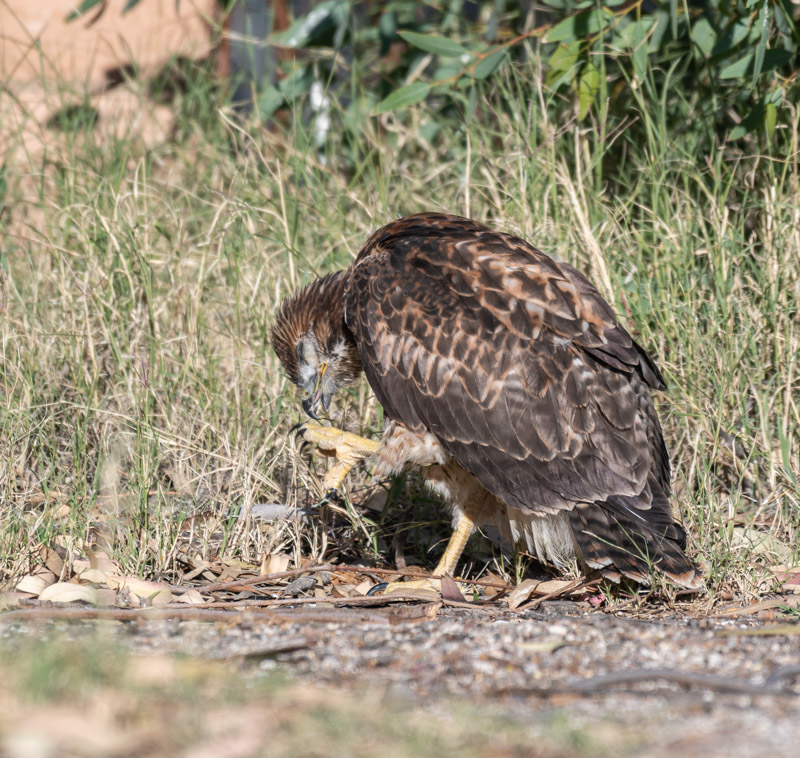
And because it was still young and not very skilled at balance, it fell right over on its side while working on its talon.
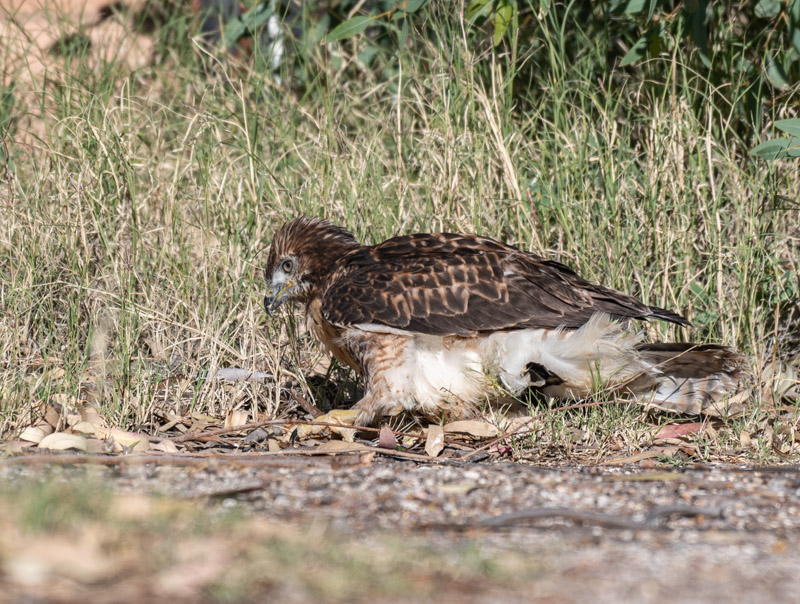
The Red-tail got up, figuratively dusted itself off, turned around, and headed for the shade towards the right.
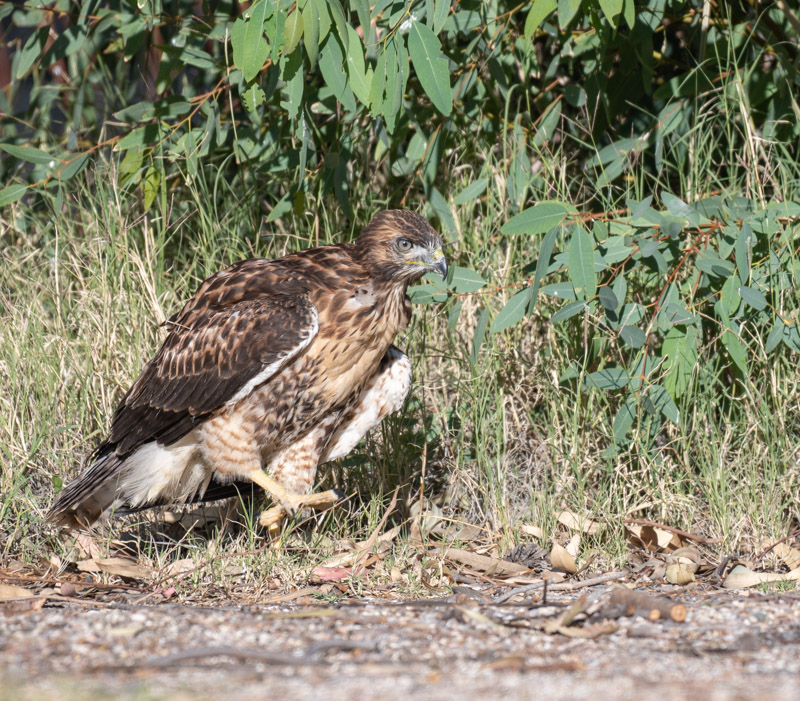
Meanwhile, one of the parents had returned and settled into the nest. It waited for a while and, when neither of the chicks near the nest responded to the parent, it flew off towards a nearby telephone pole. I could see that it was carrying some prey. After landing on the pole, it began to be harassed continually by two different Mockingbirds. Perhaps the hawk had caught one of the Mockingbird’s family members. Or perhaps the Mockingbirds just knew the Red-tail was a predator and just wanted to harass the hawk.
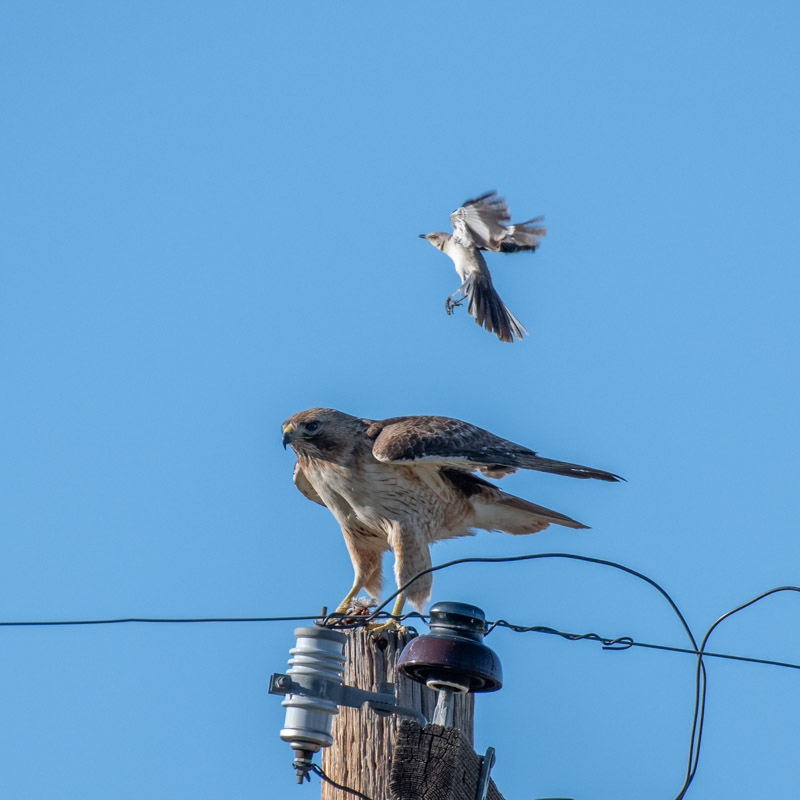
The Red-tail Hawk was finally driven off of the pole and, after flying around, landed on another nearby pole. It looked back towards the nest to check on its little ones, and then began to consume its prey.
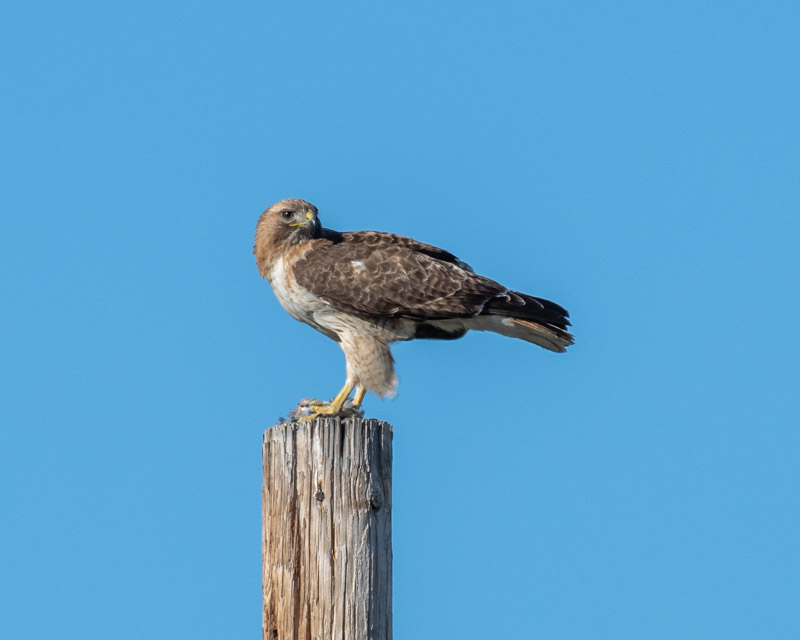
After breakfast, it flew off. We left satisfied to have seen the chick on the ground and to have witnessed this interesting behavior. We thought a second chick might leave the nest and go to the ground the next day so we planned to return then.
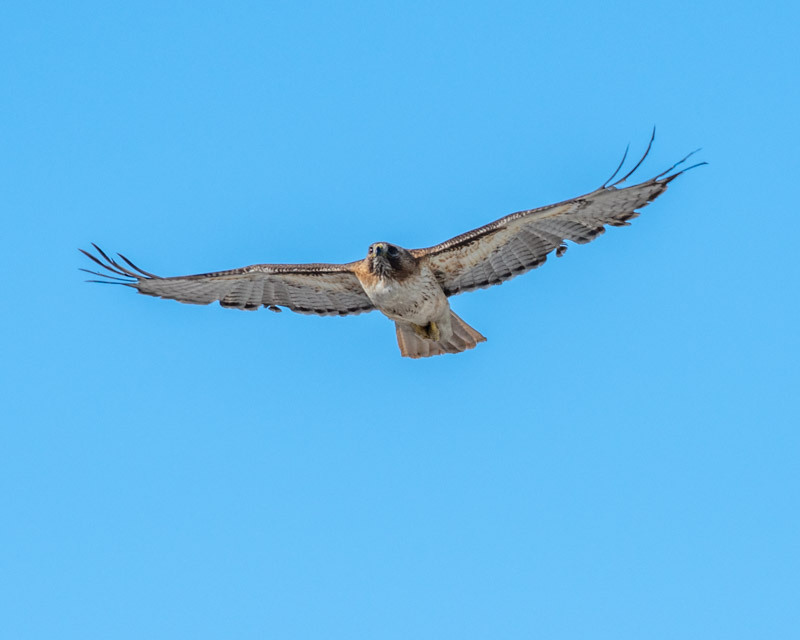
The next morning we arrived shortly after sunrise and found the first Red-tail chick behind the house and next to a car. Not quite the most picturesque location but an interesting shot of an urban raptor.
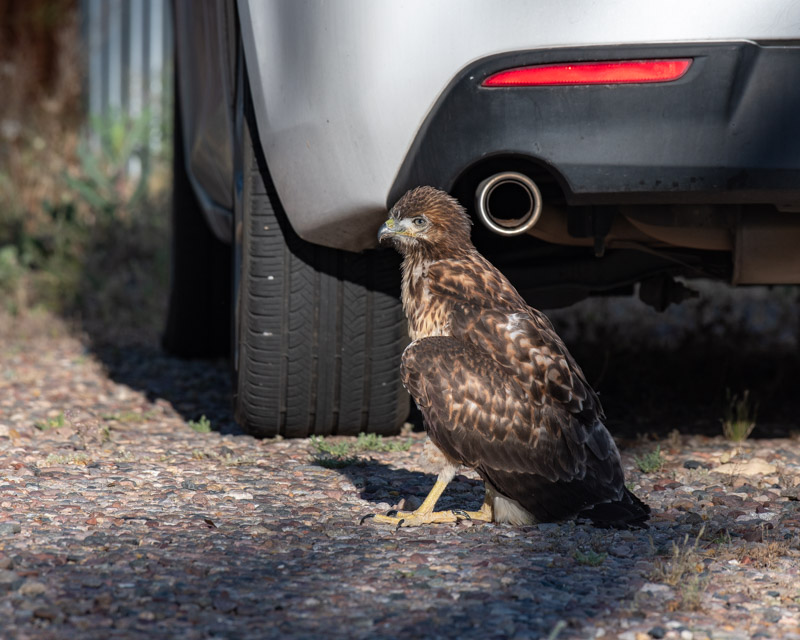
The chick was close enough for some portrait shots.
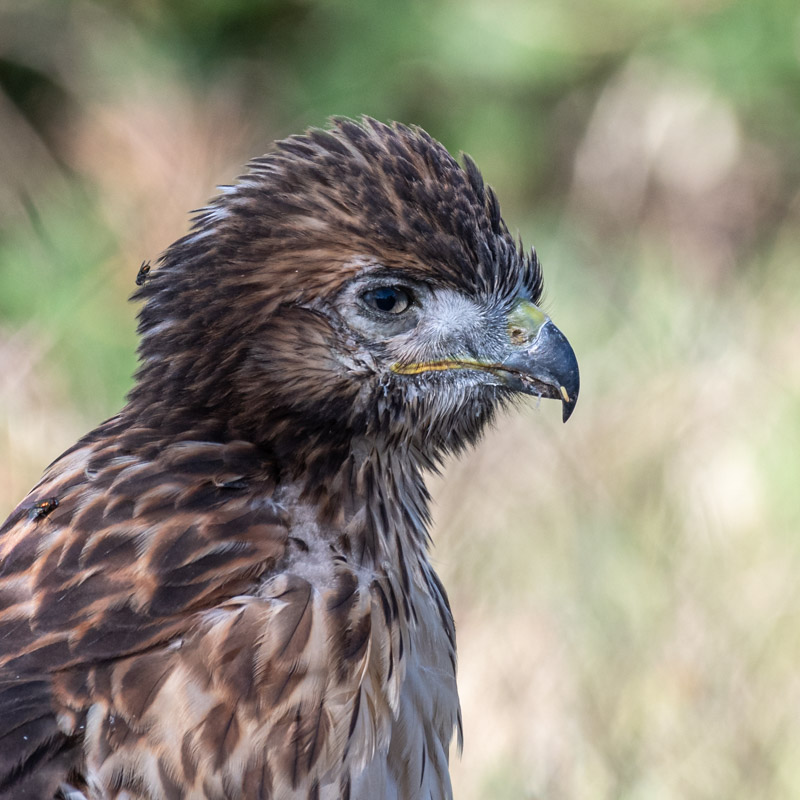
Caption this! For a fierce predator, this young raptor sure has a gawky look to it, particularly when you notice the fly on its face. This hawk is just curious about the two humans crouched in the street with super large “eyeballs” (aka, camera lenses) staring at him.
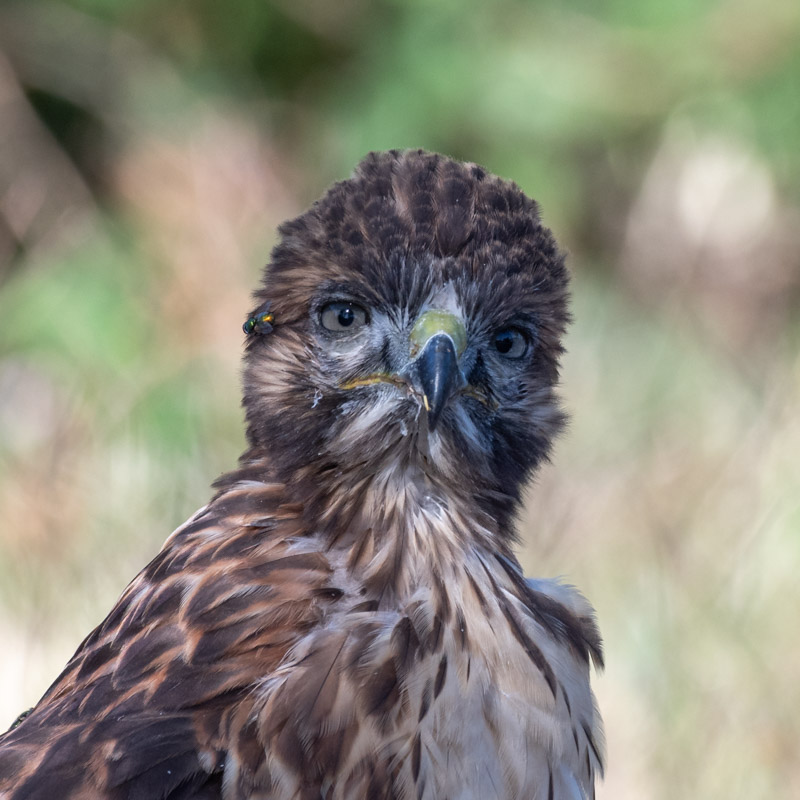
And then he just turned and went back to sleep! I don’t think it was very worried about us.
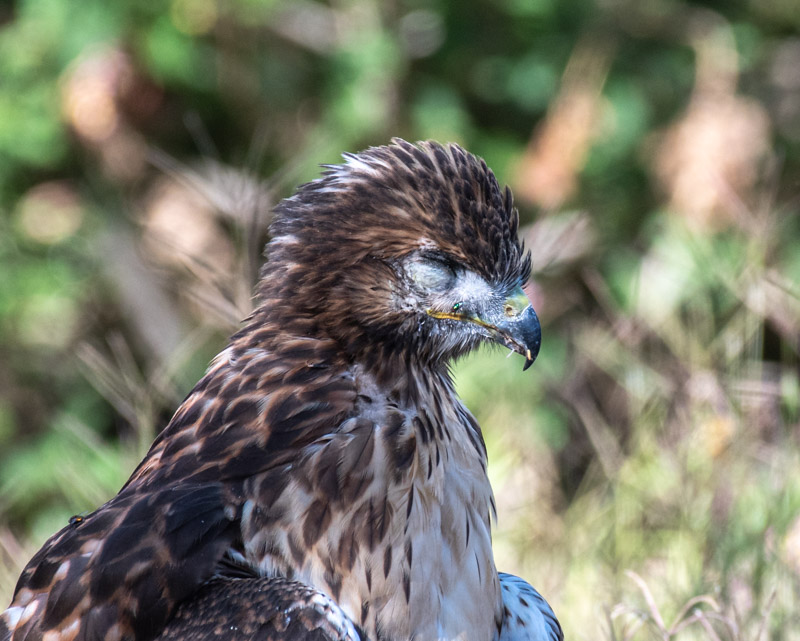
Meanwhile both parents were taking good care of their young. At one point both landed on the telephone pole just above the bird on the ground. The adult on the right appears much larger than the one on the left, letting us know that is the female. After a bit, the female flew off and then the male followed her a minute later.
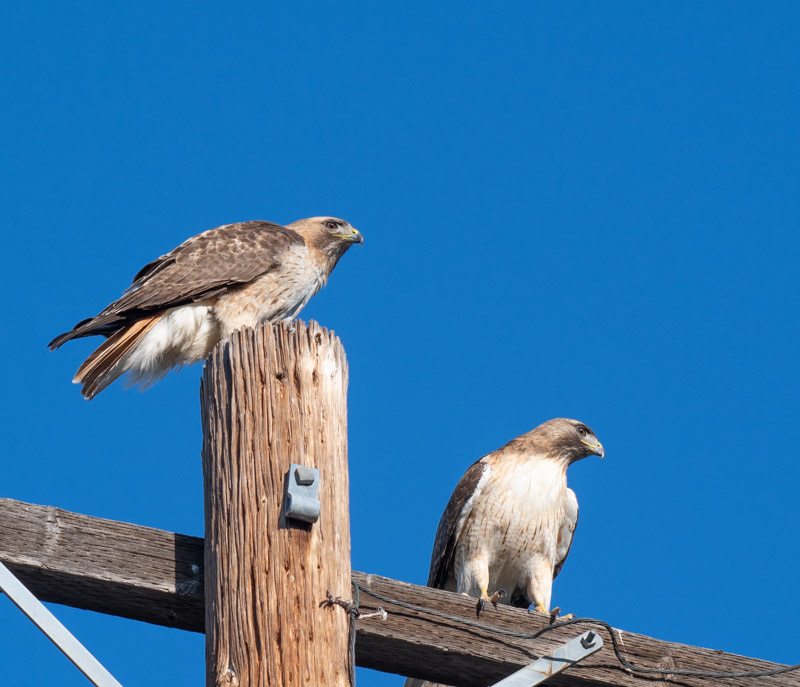
I did not return to the Red-tail nest for two days but when I did return, hoping to see other chicks on the ground, I was surprised to find no birds at all. Apparently all three chicks were now capable of at least short range flights and the three chicks and the two parents were nowhere to be seen. I will swing by the area over the next few days just in case they return.
Watching these Red-tails on the nest and seeing the chicks grow was very special. Timing is everything and I feel lucky to have been able to witness this part of their lives. I’ll calendar this nest for next March again in hopes that the parents will return to what was a good and successful nest.
